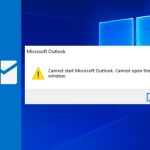Introduction:
The presence of malware on your computer can lead to a myriad of issues, ranging from compromised security to reduced performance. One such malicious software is the counter.wmail-service.com Trojan. Trojans are a type of malware that masquerades as legitimate software while carrying out harmful actions in the background.
In this guide, we will explore the intricacies of the counter.wmail-service.com Trojan and furnish you with a comprehensive, step-by-step approach to successfully eliminating it from your system.
Understanding counter.wmail-service.com:
Counter.wmail-service.com Trojan is a malicious software program that is designed to infiltrate and compromise computer systems. It often presents itself as a harmless or even beneficial program, tricking users into downloading and installing it. Once inside your system, the Trojan can perform various malicious activities, including stealing sensitive information, recording keystrokes, delivering other malware, and even giving hackers remote access to your computer.
Symptoms of a counter.wmail-service.com Trojan Infection:
- Sluggish computer performance
- Unusual pop-ups and advertisements
- Redirected web searches
- Unauthorized access to personal files or accounts
- Frequent system crashes or freezes
Also Read: How to make a Slow Moving Laptop faster
Removing counter.wmail-service.com Trojan: A Step-by-Step Guide
-
Disconnect from the Internet: Prior to initiating the removal procedure, it is advisable to disconnect your computer from the internet. This precautionary step aims to halt any ongoing communication between the Trojan and its command and control server.
-
Enter Safe Mode: Initiate a computer restart and access Safe Mode, a protective environment. This action effectively thwarts the Trojan from executing and facilitates its streamlined removal process.
-
Use Antivirus Software: Run a full system scan using reputable antivirus software. Make sure your antivirus definitions are up to date. Allow the antivirus program to quarantine or remove any detected threats.
-
Delete Temporary Files: Clear your computer’s temporary files and cache. This will help remove any remnants of the Trojan and improve your system’s performance.
-
Update Operating System and Software: Recheck that your operating system and all software are current with the latest security patches, as this proactive measure aids in thwarting potential future infections.
-
Reset Web Browsers: In the event that your web browsers have encountered an impact, restore them to their default settings to eliminate any malicious extensions or configurations.
-
Manually Remove Suspicious Programs: Go through your list of installed programs and remove any unfamiliar or suspicious applications. Be cautious not to delete legitimate software.
-
Check for Rogue DNS Settings: Malware often changes DNS settings to redirect your internet traffic. Ensure your DNS settings are correct or set to obtain automatically.
-
Scan for Malware with Additional Tools: Use reputable malware removal tools to perform a secondary scan and ensure complete removal of the Trojan.
-
Change Passwords: Modify the passwords for your online accounts, particularly focusing on those that could have been jeopardized during the Trojan’s operation. Reconnect to the Internet: After confirming the removal of the Trojan and securing your system, you can reconnect to the internet.
Also Read: Advanced Systemcare 12.3 -Real time protection for your Computer
Conclusion
Counter.wmail-service.com Trojan is a dangerous piece of malware that can compromise your computer’s security and performance. Swift action is required to remove it and prevent further damage.
Adhering to the sequential instructions provided in this article empowers you to proficiently eliminate the Trojan from your system, safeguard your personal data, and reinstate optimal functionality to your computer.
Remember that prevention is key – practicing safe browsing habits and maintaining up-to-date security software will help you avoid future Trojan infections.

Techspurblog is a blog dedicated to providing industry-leading insights, tips, tricks and tools on topics such as web design, app development, SEO and more. We also provide reviews of the latest tech products and services that can help you get the most out of your business.





